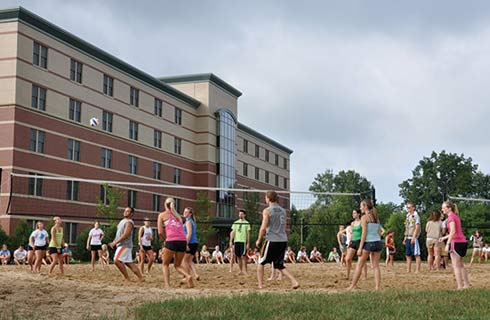Bachelor of Science in City and Regional Studies

学历文凭
Bachelor Degree

专业院系
城市,社区和区域规划

开学时间

课程时长

课程学费

国际学生入学条件
Application online
Application fee
Proof of English language proficiency
Confirmation of financial support
Secondary School Report with Transcripts (translated)
Receive admission packet with information for your visa
International candidates are asked to have their secondary school or high school guidance counselor
complete the Secondary School Report.
Your application must include one letter of recommendation from a teacher, counselor, coach or
employer who knows you
The submission of standardized tests is optional for students applying for undergraduate admission.
When applying for undergraduate programs the minimally accepted TOEFL scores are:
550-paper, or,
213-computer, or,
80 Internet based
the minimally accepted IELTS scores are: 6.5.
Application fee
Proof of English language proficiency
Confirmation of financial support
Secondary School Report with Transcripts (translated)
Receive admission packet with information for your visa
International candidates are asked to have their secondary school or high school guidance counselor
complete the Secondary School Report.
Your application must include one letter of recommendation from a teacher, counselor, coach or
employer who knows you
The submission of standardized tests is optional for students applying for undergraduate admission.
When applying for undergraduate programs the minimally accepted TOEFL scores are:
550-paper, or,
213-computer, or,
80 Internet based
the minimally accepted IELTS scores are: 6.5.
IDP—雅思考试联合主办方

雅思考试总分
6.5
了解更多
- 雅思总分:6.5
- 托福网考总分:80
- 托福笔试总分:550
- 其他语言考试:NA
CRICOS代码:
申请截止日期:请 与IDP联系 以获取详细信息。
课程简介
The City and Regional Studies program allows students to pursue knowledge in a range of disciplines, from sociology to politics to architecture. You will explore the physical patterns of cities while learning to address the social, political, economic, and environmental considerations. Due to the interdisciplinary nature of the program, you will gain strong writing skills, develop both qualitative and quantitative analytical skills, and build the capacity to think critically about the world around you. It prepares students to understand the complex issues that impact the human environment by addressing social, political, economic, environmental, and physical forces. Armed with this knowledge, you will be able to better advocate for social equity and justice in communities in the U.S. or abroad. The Catholic University of America's four-year, 120-credit-hour undergraduate program in city and regional studies is an interdisciplinary, non-professional degree program leading to the Bachelor of Science in City and Regional Studies (B.S.C.R.S.). It prepares students to understand the complex issues that impact the human environment by addressing social, political, economic, environmental, and physical forces. Students develop skills to explore and evaluate not only the physical patterns of cities and their surrounding regions (i.e., the buildings, street networks, open spaces, etc.) but also gain a more holistic insight into the complex challenges of contemporary urban life.
相关申请

预科

奖学金

实习机会

在校学习

跨境学习

校园授课-线上开始

在线/远程学习
本校相关课程
Doctor of Philosophy in Social Work

学历文凭
Ph.D.
下一个开始日期
课程费用总额
Doctor of Philosophy in Moral Theology and Ethics

学历文凭
Ph.D.
下一个开始日期
课程费用总额
Doctor of Philosophy in Religion and Culture

学历文凭
Ph.D.
下一个开始日期
课程费用总额
Doctor of Philosophy in Systematic Theology

学历文凭
Ph.D.
下一个开始日期
课程费用总额
Doctor of Philosophy in Historical Theology

学历文凭
Ph.D.
下一个开始日期
课程费用总额
Doctor of Philosophy in Church History

学历文凭
Ph.D.
下一个开始日期
课程费用总额
其他相关课程
规划哲学博士

滑铁卢大学
泰晤士高等教育世界大学排名:

学历文凭
Ph.D.
下一个开始日期
课程费用总额
规划文学硕士

滑铁卢大学
泰晤士高等教育世界大学排名:

学历文凭
Masters Degree
下一个开始日期
课程费用总额
规划学硕士

达尔豪斯大学
泰晤士高等教育世界大学排名:

学历文凭
Masters Degree
下一个开始日期
课程费用总额
规划硕士

达尔豪斯大学
泰晤士高等教育世界大学排名:

学历文凭
Masters Degree
下一个开始日期
课程费用总额
城市与区域规划学士

多伦多都会大学
泰晤士高等教育世界大学排名:

学历文凭
Bachelor Degree
下一个开始日期
课程费用总额
城市规划硕士

曼尼托巴大学
泰晤士高等教育世界大学排名:

学历文凭
Masters Degree
下一个开始日期
课程费用总额





